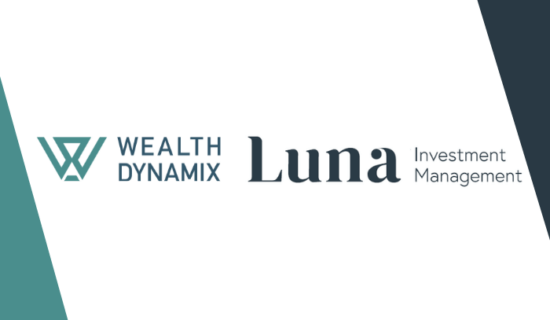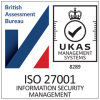People power: wealth management’s most valuable commodity, and how technology is holding it back
The surreal early days of lockdown were a mixture of shock, concern and confusion for many. While the nation took in the enormity of the pandemic, businesses that could create some semblance of normal were keen to make the best of this. Service industries migrated online, encouraged by rapid customer adoption of the new technologies that enabled business-as-nearly usual.
The wealth management industry wholeheartedly embraced new ways of working, bringing an industry that is notoriously steeped in tradition and the currency of relationships eons into the future in the process. Yet while much has been reported on the clients perspective of the new modus operandi, little has been said about how businesses themselves have found and adjusted to pandemic life.
We teamed up with independent advice firm Compeer, to understand the true picture of wealth management from the relationship manager’s point of view. We asked a cross section of Investment Managers, Portfolio Managers and Wealth Managers about the true reality of relationship management, their professional priorities and business expectations and the highlights working with clients. James Brown, Compeer’s Head of Client Services and Gary Linieres, CEO of Wealth Dynamix explored the findings at a recent webinar, adding insight from their regular dialogue with senior executives and non-client-facing staff to provide a true 360-degree perspective.
Testing times
While one of the surprising consequences of working from home has been the time saved through limited travel, relationship managers are still bogged down in admin. Asked to name the biggest drain on their time, compliance comes out top, accounting for 18% of a relationship manager’s day – and 75% stated this was too much for their liking.
“Firms need to think carefully about administration. Look at data, for example. It’s important to make use of support resources so that data entry is placed elsewhere – this will then free relationship managers up to focus on clients and their underlying portfolios.“
The relationship managers we spoke to were unanimous that clients were the key motivation in their day-to-day roles, and client management consumes up to 27% of their day. But underlying admin remains a drain on their resources: preparing for meetings consumes an average of 1.6 hours while writing up notes afterwards takes 1.3 hours. This is not surprising, said Compeer’s James Brown. “Firms need to think carefully about administration. Look at data, for example. It’s important to make use of support resources so that data entry is placed elsewhere – this will then free relationship managers up to focus on clients and their underlying portfolios.”
Big ambitions
In spite of the challenges that have arisen over the last 18 months, it was clear from the research that growth remains a continued priority for advisory firms. Relationship managers told us that many of their firms still have growth targets of close to 10%, with a large group with targets of 11-25% over the next 12 months. But achieving these will be no mean feat. As Gary pointed out, “The great transfer of wealth is imminent: as much as $15 trillion will be transferred to the next generation over the next 10 years. There’s no reason for younger clients to necessarily have to go to the same wealth management provider as their parents, and one major issue is that wealth managers barely communicate with them because a lack of resources and natural inclination to focus on the wealth holders themselves.”
James agreed. “There needs to be a major step up with digital. One of the good things that’s come out of this pandemic is that firms are increasingly embracing digital services, and they’re seeing that performances have been particularly good, and there are still steady inflows. And while we’ve seen an encouraging increase in reaching this demographic through targeted seminars, for example, they need to be aware that they can’t expect the same levels of loyalty from the next generation that they’re used to.”
Clients count
Onboarding appears to be a steadfast obstacle: a staggering 69% of relationship managers reported that it takes a week to successfully onboard clients. Just 2% work with fully automated onboarding systems and 19% say their firm has yet to automate any element of this vital process, so there’s still plenty of work that can be done to build a firm foundation when it really matters.
“The key is to ensure that prospecting and managing potential new business is aligned with client onboarding processes and eventual client relationships. Firms need to consider how they’re disseminating the underlying information to senior management and the regulatory officers within their business, to ensure a truly cohesive approach.”
And in an industry that pivots on client relationships, that’s vital. Wealth Dynamix’s Gary Linieres said it’s a widespread issue impeding productivity across the board. “It actually stems from the underlying technology within firms themselves,” he said. “The key is to ensure that prospecting and managing potential new business is aligned with client onboarding processes and eventual client relationships. Firms need to consider how they’re disseminating the underlying information to senior management and the regulatory officers within their business, to ensure a truly cohesive approach. If we can get that, the industry, I hope will be a happier place.”
Legacy let down
Once onboarding is complete, it seems the pain for wealth managers is far from over. The relationship managers we spoke to frequently called out poor systems as one of the least enjoyable factors within their work, and over half (54%) stated that they do not have access to a CLM (client lifecycle management) or CRM system. Of those who had such a system in place, 38% were dissatisfied with it, and 48% were neutral – which could well suggest a lack of confidence in those available across the market itself. And as James and Gary agreed, even if a firm has made due investment in technology, installing it is not enough.
“Market players need to deploy technology the right way to really make a difference. All too often, we see wealth managers buying into a lift-and-shift or a bolt-on CRM solution, which can be more problematic than not having the technology in the first place,” Gary said. “As we always tell our clients, you can’t simply digitise a manual process and expect it to be more efficient. The key is to streamline a process, and then digitise it. Doing this could be all it takes to give wealth managers the edge they need in a fast-moving and competitive market.”
READ OUR INSIGHTS
17 April 2024
Achieving profitability at scale: the potential for AI
We delve into the use of AI technology in wealth management. Far from belonging to a far-distant future, it is here and growing more intelligent by the day.
5 min. read
2 April 2024
Empowering client-facing relationship managers and advisors: Perspectives from Wealth Dynamix’s APAC head
Hubbis recently hosted a digital dialogue focusing on the application of the latest digital solutions for the Relationship Managers and advisory in the world of Asian wealth management, as technology revolutionises the offerings and efficiencies across the broad wealth management community in the region.
5 min. read
19 March 2024
Navigating the challenges of scaling through technology
Avoid buyer’s remorse with an upfront analysis of the challenges of modernising your technology stack for greater scalability. Join us as we unpack the issues and give you some pointers.
5 min. read






